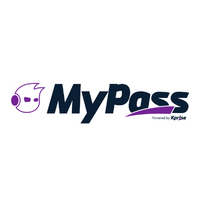Pay For Learning, Not Logins!
For years, Learning Management Systems (LMSs) have powered corporate training, compliance programs, and academic eLearning. But as learning needs grow and teams expand across regions, a familiar pain point continues to frustrate decision-makers: traditional per-user pricing. Most LMS vendors still operate on a rigid model—charging for every active user or tier upgrade. This structure worked when learning was linear and limited to small groups. Today, however, organizations need flexible systems that can scale on demand, control costs, and still deliver value across multiple teams and projects. That’s where credit-based pricing is a new approach rewriting the rule-book.
What Is Credit-Based LMS Pricing?
Instead of charging by the number of users, credit-based pricing allows organizations to buy a pool of credits and spend them on actual learning activities—such as course enrollments, assessments, certifications, instructor-led sessions, or AI actions/prompts. Think of credits as the “currency of learning.” Each credit represents a measurable learning interaction, not just a head count. When learners consume training, credits are deducted. When usage is low, credits remain unused—meaning you never overpay for dormant users. This shift aligns cost directly with engagement and outcomes, not potential usage.
Sponsored content – article continues below
Trending Learning Management Systems (LMS)
Why Credit-Based Pricing Is Gaining Traction
1. Scalability Without Penalty
Traditional LMS plans penalize growth. Add new departments, vendors, or external learners—and your bill skyrockets. Credit-based models eliminate that fear. You can onboard unlimited users and only pay when learning actually happens. This makes it ideal for:
- Training businesses managing multiple clients.
- Enterprises running seasonal or project-based programs.
- NGOs and nonprofits with fluctuating learner volumes.
In short, you scale learning—not your costs.
2. Fairness And Transparency
With per-user pricing, you often pay for inactive users, duplicate accounts, or employees who only log in once a year. A credit system introduces accountability—you only pay for genuine participation. Every credit spent can be tracked and reported, giving complete transparency into ROI and learning effectiveness.
3. Better Budget Control For L&D Teams
Budgets in L&D are notoriously tight. CFOs want predictable costs; training heads need flexibility. Credits bridge that gap by allowing teams to prepurchase learning capacity. They can allocate credits by department, project, or client, making budget tracking simple and flexible. It’s like managing cloud resources—efficient and data-driven.
4. Encourages Adoption Across The Organization
When there are no “seat limits,” HR, compliance, and business units can all use the same LMS freely. This promotes a culture of organization-wide learning, where access isn’t restricted to paid licenses but open to everyone. The result: higher engagement and cross-functional collaboration. The usage-based flexibility ensures that the LMS grows with your needs, not against them. Platforms can automate this tracking through AI-driven dashboards—showing credit usage trends, upcoming requirements, and forecasts for renewal.
The Strategic Advantage For Training Businesses
If you run a training company, consultancy, or learning marketplace, credit-based pricing unlocks massive business value:
- Simplified reselling
Offer credits to clients as part of their package or subscription. - Predictable margins
Control your costs regardless of how many learners join. - Increased profitability
Eliminate waste from unused user slots or inactive licenses. - Client retention
Credits create a “stickiness” factor—clients stay longer when they see transparent value tied to usage.
In short, it’s the perfect blend of SaaS and pay-as-you-grow economics.
Credit-Based Pricing Meets Agentic AI
The next phase of this evolution is agentic AI integration—where AI agents manage credit allocation, predict usage, and optimize cost efficiency in real time. Imagine an LMS that:
- Auto-suggests the most cost-effective learning path for each user.
- Predicts when credits will run low and automates top-ups.
- Identifies underused programs and reallocates credits to high-impact courses.
That’s not a distant vision—it’s work in progress in some of the intelligent LMS ecosystems.
The Democratization Of Learning
Credit-based LMS pricing isn’t just a new billing model—it’s a movement toward learning equality. When organizations are no longer restricted by per-user costs, they can extend learning to partners, vendors, gig workers, and communities—making professional education more accessible than ever. This aligns perfectly with the global trend toward lifelong, inclusive learning.
Looking Ahead
As AI and automation reshape workplace learning, LMS platforms must evolve from rigid software systems into adaptive learning ecosystems. Credit-based pricing is one of the key enablers of that transformation—creating a world where learning scales affordably, sustainably, and intelligently. The future LMS won’t just host courses—it will intelligently manage value, optimize engagement, and empower organizations to grow without financial friction.
Sign-Off Thought
Learning should never be limited by a price tag. By combining credit-based pricing with agentic AI, new age LMS providers are ensuring that every organization—big or small—can deliver world-class learning experiences without worrying about user caps or wasted licenses. The result? An ecosystem where learning is measured by impact, not invoices.
